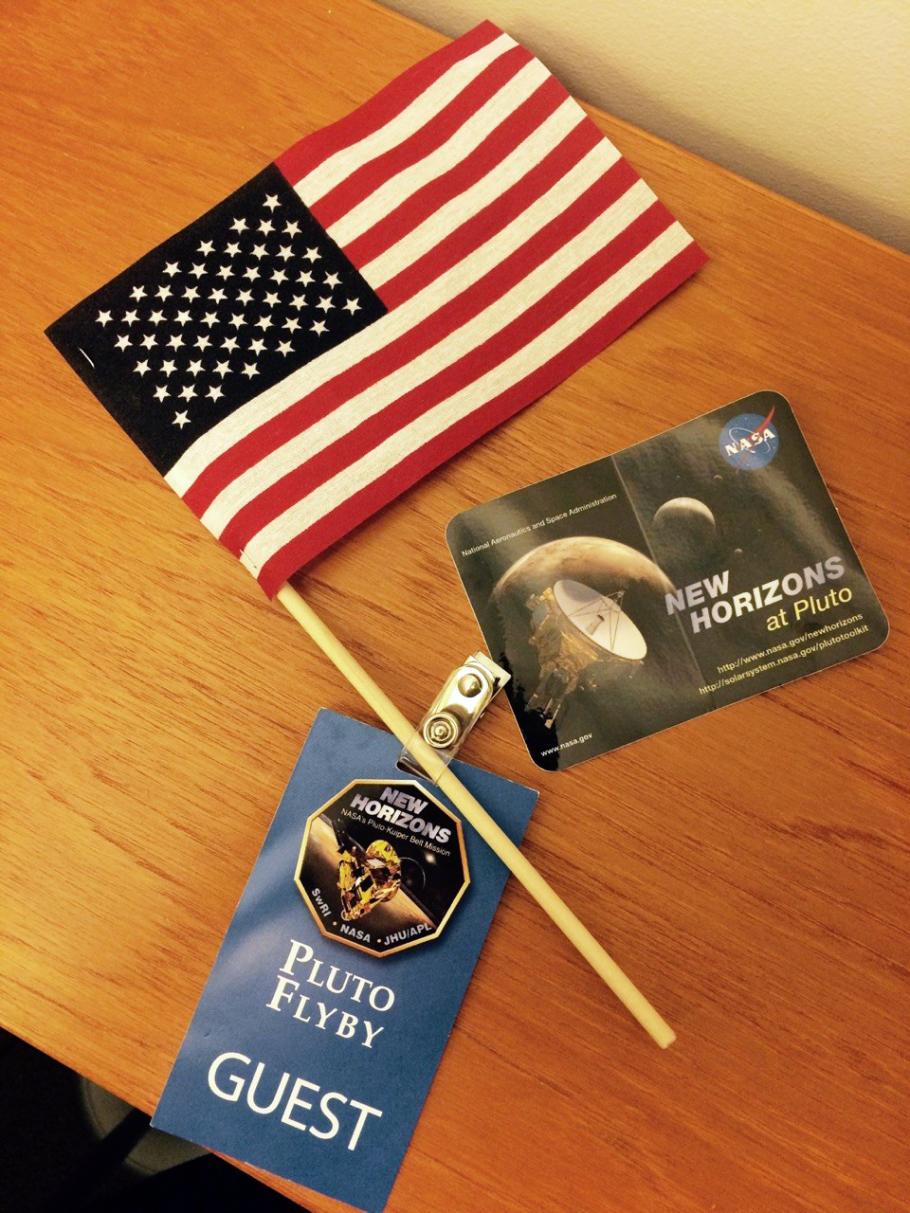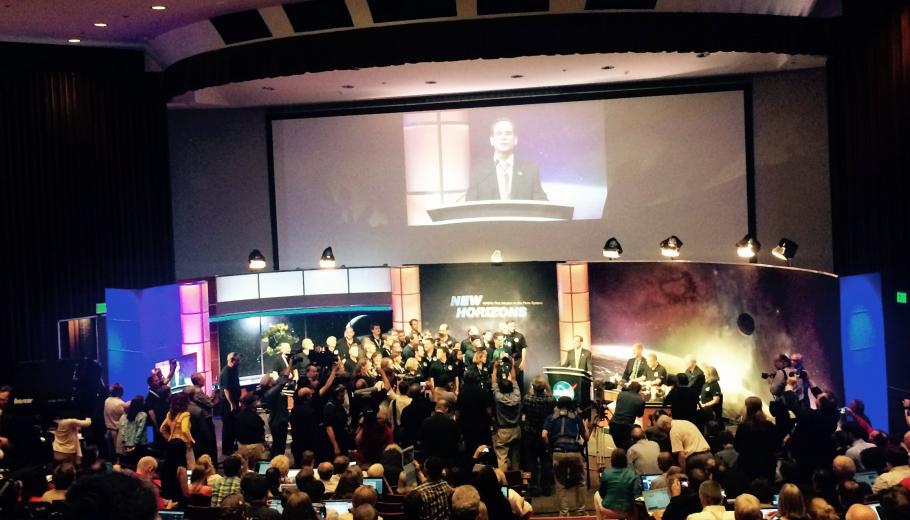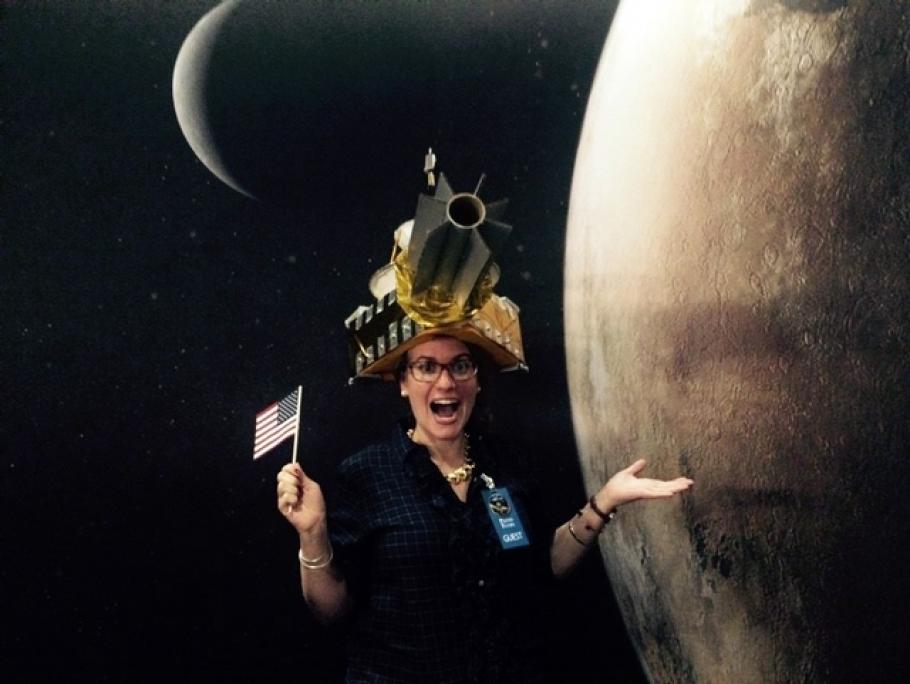On July 13 and 14, I was invited to visit the Johns Hopkins University Applied Physics Laboratory in Laurel, Maryland, for the New Horizons Pluto Flyby Events. These included various panels and speakers including Tom Krimigis, the only person to have been a part of a mission to visit all nine major bodies in our solar system; Ann Druyan; Dava Sobel; and Amy Teitel whose Pluto in a Minute series is a great way to get caught up on the New Horizons mission. Also in attendance were Annette and Alden Tombaugh, children of Clyde Tombaugh. Clyde Tombaugh originally discovered Pluto in 1930, and his ashes were attached to the New Horizons spacecraft. Annette and Alden were thrilled to watch as their father got to finally explore Pluto up-close. (The instrument Tombaugh used to discover Pluto is currently on display at the Museum in Washington, DC in Exploring the Planets. Learn more about Tombaugh's discovery with the blink comparator.) The party really began on Tuesday, July 14, the day of closest approach. As we arrived at 7:00 am, the New Horizons team and guests (me and hundreds of team, friends, and family) were all handed tiny American flags and crammed into a ballroom in the Kossiakoff Center, at John Hopkins, to count down to the closest approach. At 7:49 am, the whole crowd and New Horizons team erupted into cheers, shouts, and applause, all furiously waving our flags celebrating the moment New Horizons passed 10,000 km (6,200 mi.) from Pluto’s surface!
A badge, celebratory flag, and sticker inspired by the closest approach were all handed out at the New Horizons Flyby event. Emily Martin, postdoctoral fellow in the Center for Eath and Planetary Studies, was invited to attend the July flyby event with the mission team at Johns Hopkins University Applied Physics Laboratory in Laurel, Maryland.
Then we waited! Pluto is a 4.8-billion kilometer (3-billion mile) journey away. It takes at least 4.5 hours for New Horizons to receive a message from Earth. We had to wait nine long hours to receive the “phone home” signal from New Horizons to know whether the closest approach (that we all had just celebrated) was successful. Was the spacecraft still healthy? Did it collect all the data?
The New Horizons mission operations team celebrate after the successful Pluto flyby and subsequent "phone home" signal in the Kossiakoff Center Auditorium at John Hopkins.
After more panels and lectures, it was time for another countdown. We watched live as Alice Bowman, the Applied Physics Laboratory’s first female mission operations manager, began receiving data on the health of New Horizons and the success of the mission. New Horizons was healthy and had recorded all the expected data! This was the moment for Mission Operations, who are to be credited with the successful nine-year cruise to Pluto and encounter. The parade of Mission Operations from their workstations into the Kossiakoff Center Auditorium was the NASA version of a New York City ticker-tape parade. They really are rockstars. The image above captures it all! An even more emotional moment than the flyby if you can imagine! Pluto and its five moons continue to surprise, shock, inspire, and excite us. Over the next 16 months, the data will be steadily beamed back to Earth by New Horizons. Keep your eyes on New Horizons, there is much, much more to come!
Emily Martin, a postdoctoral fellow in the Center for Earth and Planetary Studies, celebrates the New Horizons flyby during the live "watch party" at Johns Hopkins University Applied Physics Laboratory in Laurel, Maryland.


